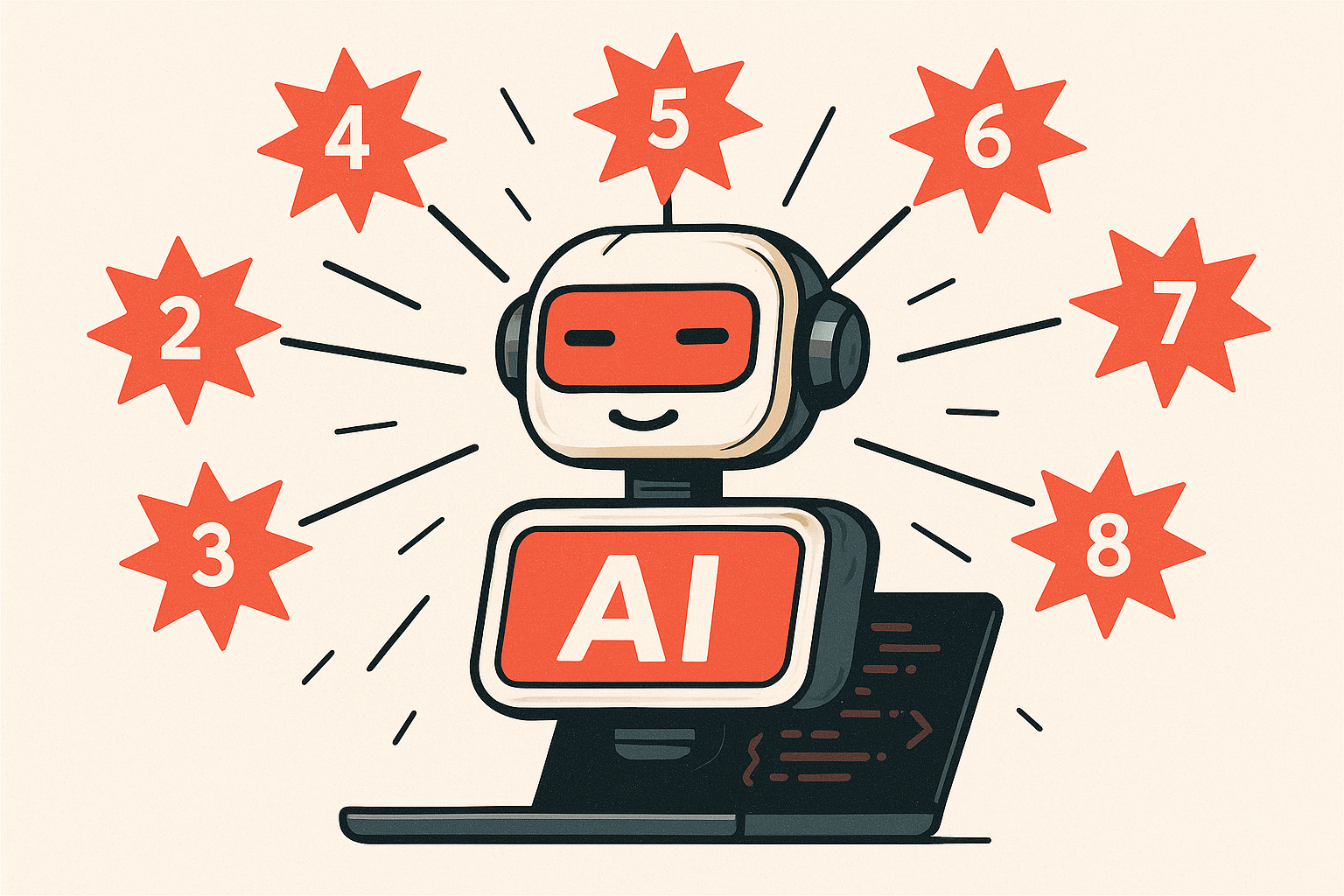8 techniques for effective AI-assisted software development
Published 2025-06-20 by Mattia • 4 min read
In times of significant technological transformation, we must be both visionary and pragmatic, implementing the new tools at our disposal effectively. From this practical perspective, I've gathered insights from various development teams to compile a collection of 8 impactful techniques for effective AI-assisted software development.

1. Keep tasks small and decompose complex problems.
Break down large tasks into minimal, coherent steps. Beyond being an engineering best practice, reducing complexity enables delegation of simpler tasks that AI can execute with high success rates.
Large, monolithic tasks often confuse AI systems and lead to incomplete or incorrect implementations that require significant manual correction. By maintaining clear boundaries between individual tasks, you create opportunities for the AI to excel at specific, well-defined problems while making it easier to identify and fix issues when they arise.
2.Plan (with AI) first.
Directly requesting task execution is inefficient as it generates significantly more iterations and rework. Collaborative planning improves outcomes substantially.
Taking time to discuss architecture, approach, and potential challenges with your AI assistant before diving into implementation helps identify edge cases and design considerations early in the process. This collaborative planning phase often saves time and reduces the likelihood of having to refactor code later.
3. Work by examples.
Providing reference examples (functions, APIs, etc.) significantly increases the code assistant’s success probability and ensures formal consistency in the output produced.
AI systems excel at pattern recognition and replication, so showing them exactly what success looks like in your codebase dramatically improves their ability to generate appropriate solutions. Examples serve as both a template for style and structure, and as a specification for the expected behavior, reducing ambiguity in requirements and ensuring the generated code aligns with your project’s existing conventions.
4. Establish reusable rules and guidelines.
Every code assistant offers mechanisms for this (cursor rules, copilot guidelines, etc.). This implements a DRY principle that enhances consistency and coherence in generated code.
Rather than repeatedly explaining your coding standards, naming conventions, or architectural preferences in each interaction, establishing persistent guidelines creates a shared vocabulary and set of expectations. These rules become particularly valuable as they accumulate over time, creating a increasingly sophisticated understanding of your project’s unique requirements and constraints.
5. Use context engineering to enable access to relevant data.
By combining a documentation-first approach with in-project documentation, MCP servers for external service access (knowledge bases, ticket management systems, etc.), and memory bank patterns, you can create context that dramatically improves results. However, avoid information overload, provide only relevant data to minimize noise.
Strategic context provision transforms AI assistants from generic code generators into project-aware collaborators that understand your domain, existing patterns, and business requirements. The key is curating this context thoughtfully, ensuring that the AI has access to the most pertinent information without being overwhelmed by irrelevant details that could dilute its focus.
6. Leverage two-level version control.
Commit frequently to GIT, at minimum before executing each micro-task, and utilize code assistant checkpoint mechanisms for additional granularity and efficient model interaction leveraging.
This dual-layer approach provides both traditional source control benefits and specialized recovery points tailored to AI-assisted development workflows. Frequent commits create safe rollback points when AI-generated code doesn’t perform as expected, while assistant-specific checkpoints allow you to experiment with different AI approaches without losing progress or polluting your main version history.
7. Define guardrails and isolate environments.
When executing AI-generated code, even during development phases, ensure it cannot inadvertently run against production data before proper review. Environments isolation is critical.
AI-generated code, while often impressive, can contain subtle bugs or make assumptions that lead to unintended consequences, particularly when interacting with databases or external services. Proper environment isolation not only protects critical systems but also provides a safe space for experimentation and validation of AI-suggested solutions. This includes implementing proper access controls, using test datasets, and establishing clear boundaries between development and production environments.
8. Maintain control through Code Review.
The risk of losing project control when intensively using AI is substantial. Code review becomes a fundamental and indispensable workflow step. While AI can assist by summarizing content and identifying potential issues, you remain accountable for what you ship.
The efficiency gains from AI assistance can create a false sense of security, leading to reduced scrutiny of generated code, but thorough review ensures that solutions align with business requirements, maintain security standards, and integrate properly with existing systems. This human oversight is essential for catching nuanced issues that AI might miss, such as business logic errors, performance implications, or subtle security vulnerabilities.